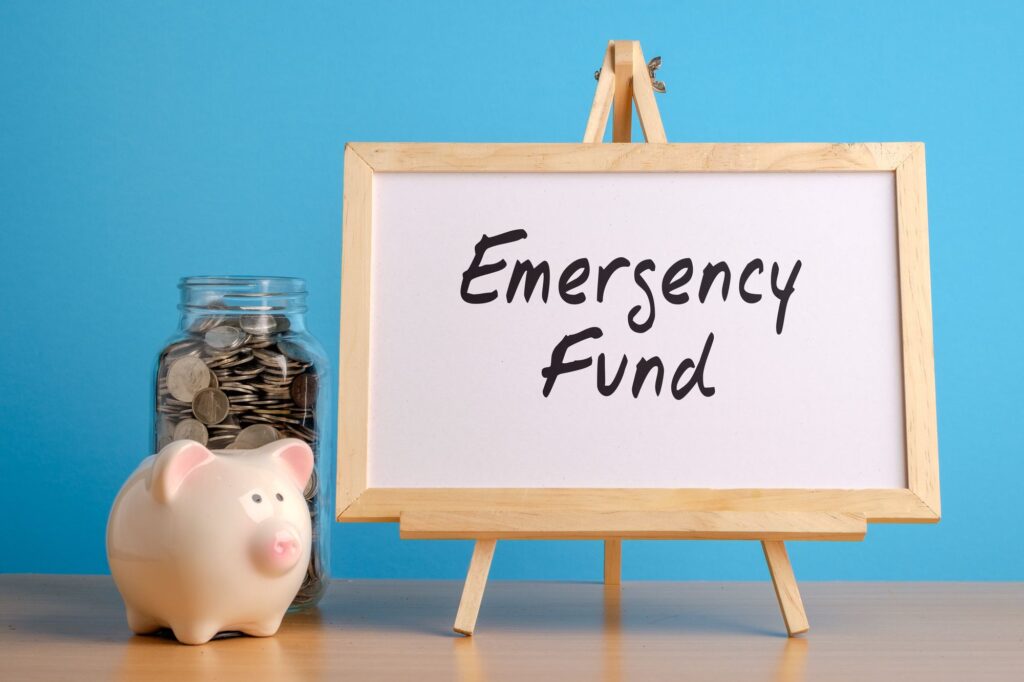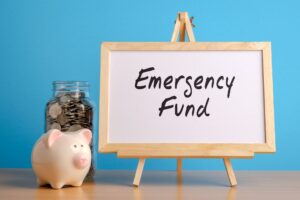Building an emergency fund is one of the smartest financial decisions you can make. It serves as a safety net for unexpected expenses like car repairs, medical bills, or even job loss. However, the challenge for many is finding a way to save money without drastically changing their lifestyle. The good news is that you can build an emergency fund while still enjoying the things you love. In this article, we’ll explore practical strategies for creating an emergency fund without sacrificing your quality of life.
Why You Need an Emergency Fund
An emergency fund provides financial security and peace of mind. It prevents you from relying on high-interest loans or credit cards when the unexpected happens. Experts recommend having enough savings to cover 3-6 months of living expenses. While that may seem like a lot, starting small and building over time is key.
The trick is to incorporate saving into your budget in a way that feels manageable, so you don’t feel deprived. Here’s how to get started.
1. Start with a Realistic Savings Goal
The first step to building an emergency fund is determining how much you need to save. While the general recommendation is to save 3-6 months of living expenses, that amount may vary depending on your circumstances. If you’re just starting, set a smaller goal, like saving $1,000, to cover minor emergencies. Once you reach that milestone, you can gradually increase your target.
Setting smaller, more attainable goals will prevent you from feeling overwhelmed and make saving more manageable. For instance, if your goal is to save $1,000 in six months, you’d need to set aside around $167 per month. This is much easier to work into your budget without feeling like you’re sacrificing too much.
Link: Mastering the Monthly Budget: Tips for Staying on Track
2. Automate Your Savings
One of the easiest ways to build your emergency fund without thinking about it is to automate the process. Set up an automatic transfer from your checking account to your savings account each payday. This way, you’re paying yourself first, and you won’t be tempted to spend the money elsewhere.
Automating your savings helps you stick to your goals without feeling the pinch. You can start small and increase the amount over time. Even if it’s just $50 or $100 a month, the consistency will add up quickly, especially when combined with other saving strategies.
3. Cut Back on Unnecessary Expenses
You don’t need to overhaul your entire lifestyle to save for an emergency fund, but small adjustments in your spending can make a big difference. Here are some simple ways to cut back without feeling deprived:
- Subscriptions: Review your monthly subscriptions. Are you using all of them? Cancel those you don’t need.
- Coffee runs: Consider making coffee at home instead of buying it daily. You’ll be surprised how much you can save over time.
- Dining out: Reduce the frequency of eating out by meal-prepping or cooking more at home.
These small changes in discretionary spending can free up money for your emergency fund. The goal isn’t to cut out all fun but to find balance in your spending. Cutting back in a few areas doesn’t mean you have to give up the things you enjoy completely.
Link: Budget Hacks for Busy Families: Save More in Less Time
4. Use Unexpected Windfalls to Boost Savings
Windfalls, like tax refunds, bonuses, or gifts, provide a perfect opportunity to boost your emergency fund. Rather than using this money for unnecessary purchases, deposit it directly into your emergency savings. Since windfalls are extra income, saving them won’t affect your lifestyle or your regular budget.
Even using a portion of a windfall for savings can make a big impact. For example, if you receive a $2,000 tax refund, consider saving at least half of it and using the rest for something enjoyable or to pay off debt.
Link: Breaking Down the 50/30/20 Rule: A Simple Approach to Money Management
5. Create a Separate Savings Account
Keeping your emergency fund separate from your regular checking account can help prevent you from dipping into it for non-emergencies. Consider opening a dedicated savings account specifically for your emergency fund. Ideally, choose a high-yield savings account that earns interest, so your savings can grow over time.
By having a dedicated account, you’ll be less tempted to use the money for discretionary spending, and you’ll have a clearer view of your progress toward your savings goal.
6. Find Ways to Earn Extra Income
If your current budget is too tight to accommodate savings, consider finding ways to earn extra income. Side gigs, freelancing, or part-time work can provide the boost you need to grow your emergency fund more quickly without cutting back on your lifestyle.
Some ways to earn extra money include:
- Freelancing: Use your skills to offer services such as writing, graphic design, or social media management.
- Online surveys: Participate in paid online surveys for a little extra cash.
- Sell items you no longer need: Declutter your home and sell unused items online.
Even a small side hustle can accelerate your savings and give you more breathing room in your budget. Plus, you don’t have to commit to long-term gigs—just find something that works with your schedule.
Link: Budgeting for Beginners: A Step-by-Step Guide to Financial Freedom
7. Adjust Your Budget Regularly
Your financial situation may change over time, which means your budget should be flexible. If you receive a raise or pay off debt, consider increasing the amount you save for your emergency fund. Similarly, if you experience a financial setback, adjust your savings plan temporarily.
Budgeting isn’t a one-time event. Reassess your income, expenses, and financial goals regularly to ensure you’re staying on track and making the most of your money. Even small tweaks can keep you aligned with your goals.
8. Use Cash-Back and Savings Apps
Cash-back and savings apps can help you save money on everyday purchases without making any significant lifestyle changes. Apps like Rakuten, Ibotta, and Honey allow you to earn cash back on things you’re already buying. You can also find discounts or coupons that reduce your overall spending, freeing up more money for your emergency fund.
The cash-back you earn may seem small, but over time, it adds up. Transfer any rewards or savings you earn into your emergency fund to boost your progress.
9. Track Your Progress and Celebrate Milestones
Saving can sometimes feel tedious, especially when you’re not seeing immediate results. That’s why tracking your progress and celebrating small milestones is essential for staying motivated. For example, every time you hit a savings goal—whether it’s $500 or $1,000—reward yourself with something small that won’t derail your budget.
Tracking your savings visually, like on a chart or in an app, can also give you a sense of accomplishment and keep you motivated to continue. Remember that building an emergency fund is a long-term goal, and progress, no matter how small, is a step in the right direction.
Link: The Power of Small Savings: How Tiny Changes Can Add Up
Conclusion
Building an emergency fund without sacrificing your lifestyle is entirely possible with the right mindset and approach. By setting clear goals, automating your savings, cutting back on unnecessary expenses, and finding creative ways to earn extra income, you can create a financial safety net without giving up the things you enjoy.
Remember that the key to success is consistency. Even if you start small, the important thing is to keep saving regularly. Over time, your emergency fund will grow, providing you with the financial security and peace of mind you need to handle life’s unexpected events.
Link: BudgetBridge.net
Start today by implementing these tips and gradually building your emergency fund. You’ll soon find that it’s not about sacrificing your lifestyle—it’s about making smarter financial decisions that help you achieve long-term stability.






